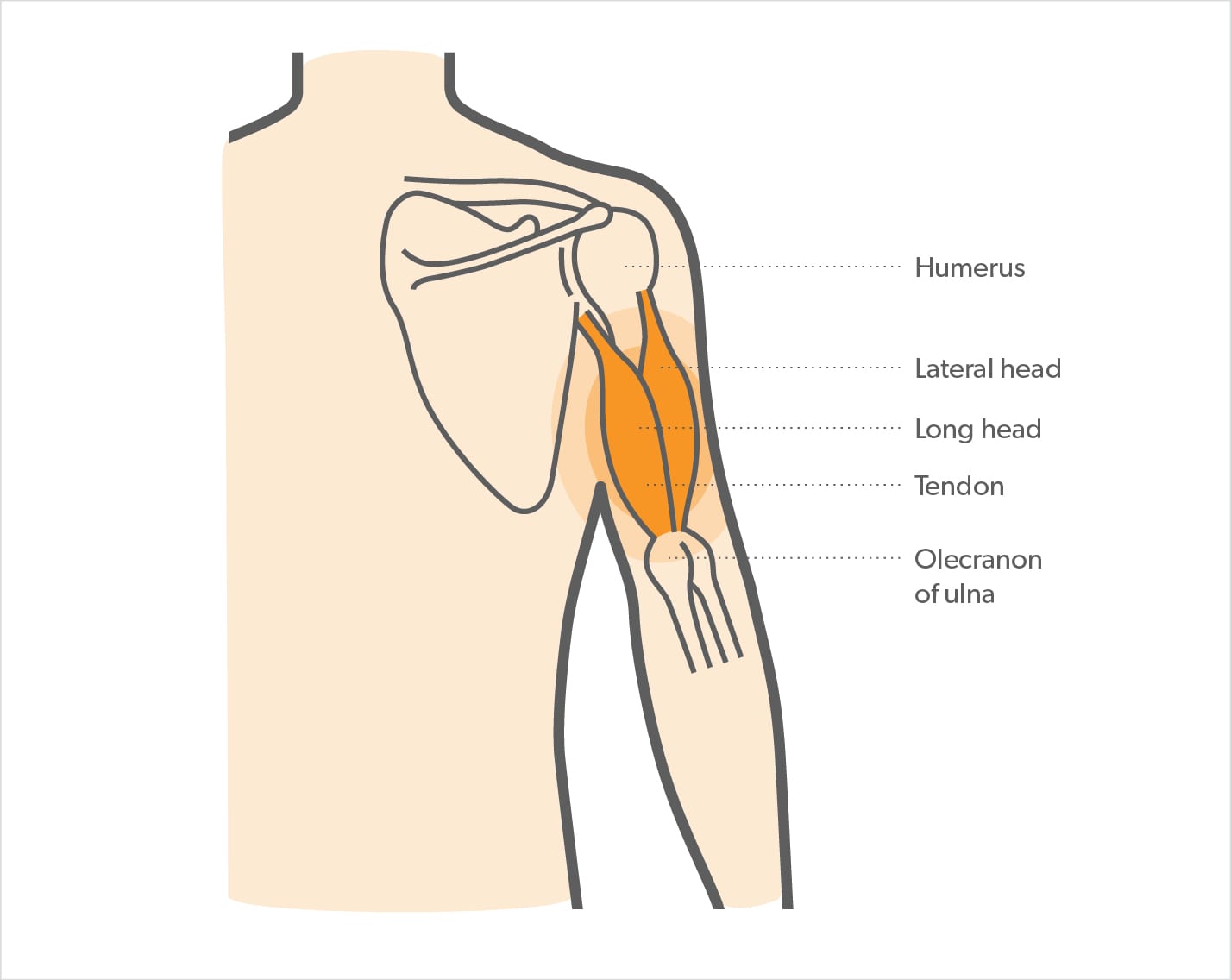Triceps tendonitis refers to inflammation of the triceps tendon. Triceps tendonitis can produce pain, weakness, and swelling at the back of the elbow. Athletes who partake in sports that involve throwing or weightlifting are susceptible to this condition due to the stress they place on their elbow.
Triceps Tendonitis Causes, Symptoms & Treatment Options
Triceps tendonitis refers to tendon inflammation of the triceps tendon. Triceps tendonitis can produce pain, weakness, and swelling at the back of the elbow. Athletes who partake in sports involving throwing or weightlifting are susceptible to this condition due to the stress they place on their elbow, often leading to overuse of the triceps.
Overview
Overview

What causes Triceps Tendonitis?
Triceps tendonitis is caused by repetitive overuse of the tendon joining the triceps muscle to the elbow. The condition is common among athletes who play sports like tennis and baseball, which involve repetitive arm movements like swinging or throwing forcefully, and sports that involve repetitive lifting, such as weightlifting. This repetitive motion frequently leads to triceps overuse.
Triceps tendonitis is common in these sports:
- Baseball (pitchers)
- Softball (pitchers)
- Tennis
- Weightlifting
Symptoms
Triceps tendonitis is characterized by back of arm soreness and pain in the back of the arm. Other symptoms may include:
- Mild swelling behind the elbow
- Elbow extension pain when extending or straightening the arm
When to see a doctor
If you experience these symptoms, you should see your doctor. He/she will take a medical history and conduct a physical exam, and will want to check your arm’s range of motion and strength in comparison to your non-injured arm. Your doctor may also put pressure on different parts of your arm to determine the greatest area of pain. If you feel pain at the triceps tendon insertion behind your elbow, you may have triceps tendonitis.
An X-ray or magnetic resonance imaging (MRI) test may also be recommended to help make a diagnosis. X-rays provide pictures of your bones, while MRI tests show clear images of soft tissues in the elbow. Both tests can help confirm if your symptoms are caused by tendon inflammation or another problem.
Non-operative treatment
Triceps tendonitis is treated conservatively, without surgery, in most cases. Initially, treatment of triceps tendonitis usually includes rest and stopping play that aggravates the injury. Ice 10 minutes every hour for the first couple of days after the injury may be recommended. Your doctor may also prescribe a nonsteroidal anti-inflammatory medication (NSAID), like aspirin or ibuprofen, to relieve pain and reduce tendon inflammation. Your doctor may recommend physical therapy as part of your treatment.
Try these exercises to help address your condition:
Below is a PDF of the Exercise Program
Surgical Treatment
Triceps tendonitis almost always heals without surgery. In very rare cases, surgery may be needed to remove the damaged area and repair the tendon.
Recovery
As most triceps tendonitis is treated non-operatively, the tendon usually heals within four to six weeks.
Athletes can also help prevent further injuries by properly warming up before play and icing the elbow if it hurts after activity.
GET BACK TO WHAT YOU LOVE. FASTER
Sources
http://www.sportsinjuryclinic.net/sport-injuries/elbow-pain/posterior-elbow-pain/triceps-tendon-inflammation
https://www.spinalandsportscare.com.au/triceps-tendinitis-posterior-tennis-elbow/
https://www.summitmedicalgroup.com/library/adult_health/sma_triceps_tendonitis/
https://secure.familyhealthtracker.com/deliver.aspx?s=lg&t=di&l=en&f=%7Be91bbbb0-0388-4212-bd7c-e08b64efa7ca%7D&key=2b94e557d5d92aaa618b854ab7b992d2
https://orthoinfo.aaos.org/en/diseases–conditions/elbow-injuries-in-the-throwing-athlete/
Frequently Asked Questions
Is there a special test to diagnose triceps tendonitis?
Yes. Diagnosis typically involves a physical exam, checking motion, tenderness, and resisted movements. Imaging, like X-rays or MRIs, may be used to confirm the issue and rule out other problems.
What leads to triceps tendonitis?
The main culprits are overuse and trauma. Repetitive motions like weightlifting, throwing, or racket sports can overload the tendon and trigger inflammation.
What exercises should you avoid with triceps tendonitis?
Skip movements that engage the triceps, including push-ups, bench presses, and overhead presses, until symptoms improve.
How long does it take to recover from triceps tendonitis?
Mild symptoms may ease within days after stopping aggravating activities, but full recovery can take several months, depending on severity.

